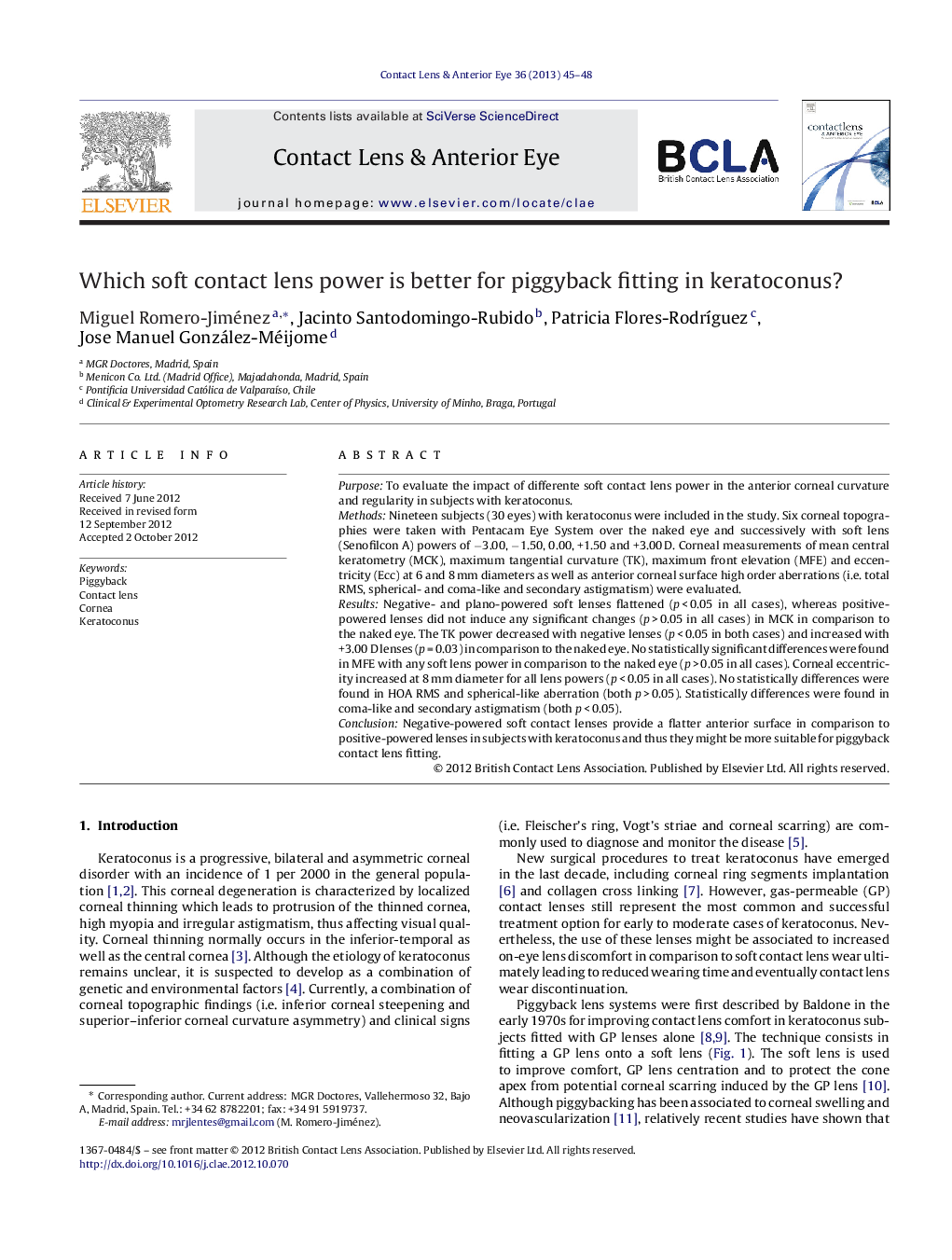| Article ID | Journal | Published Year | Pages | File Type |
|---|---|---|---|---|
| 2696133 | Contact Lens and Anterior Eye | 2013 | 4 Pages |
PurposeTo evaluate the impact of differente soft contact lens power in the anterior corneal curvature and regularity in subjects with keratoconus.MethodsNineteen subjects (30 eyes) with keratoconus were included in the study. Six corneal topographies were taken with Pentacam Eye System over the naked eye and successively with soft lens (Senofilcon A) powers of −3.00, −1.50, 0.00, +1.50 and +3.00 D. Corneal measurements of mean central keratometry (MCK), maximum tangential curvature (TK), maximum front elevation (MFE) and eccentricity (Ecc) at 6 and 8 mm diameters as well as anterior corneal surface high order aberrations (i.e. total RMS, spherical- and coma-like and secondary astigmatism) were evaluated.ResultsNegative- and plano-powered soft lenses flattened (p < 0.05 in all cases), whereas positive-powered lenses did not induce any significant changes (p > 0.05 in all cases) in MCK in comparison to the naked eye. The TK power decreased with negative lenses (p < 0.05 in both cases) and increased with +3.00 D lenses (p = 0.03) in comparison to the naked eye. No statistically significant differences were found in MFE with any soft lens power in comparison to the naked eye (p > 0.05 in all cases). Corneal eccentricity increased at 8 mm diameter for all lens powers (p < 0.05 in all cases). No statistically differences were found in HOA RMS and spherical-like aberration (both p > 0.05). Statistically differences were found in coma-like and secondary astigmatism (both p < 0.05).ConclusionNegative-powered soft contact lenses provide a flatter anterior surface in comparison to positive-powered lenses in subjects with keratoconus and thus they might be more suitable for piggyback contact lens fitting.
